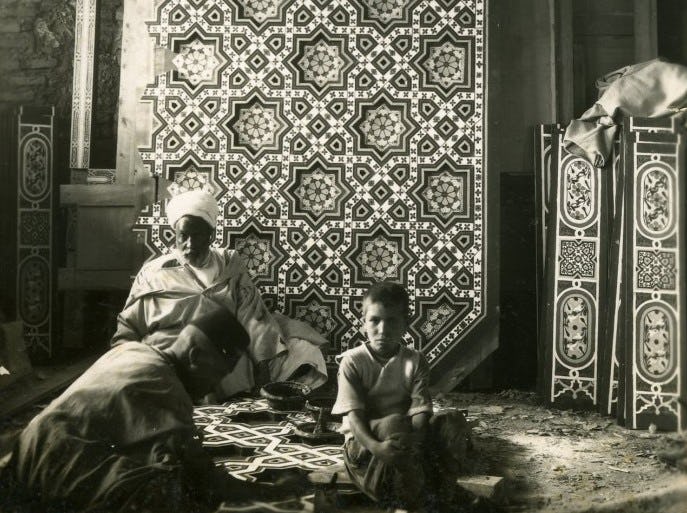Polychrome Spandrel-Shaped Tile Panel with Floral and Arabesque Motifs
Date1938-1939
PeriodPahlavi
MediumStonepaste, polychrome pigments
DimensionsOverall: 36 x 60 in. (91.4 x 152.4cm)
ClassificationsCeramics
Credit LineCourtesy of the Doris Duke Foundation for Islamic Art
Object number48.91.2
DescriptionThese tile spandrels outline the arches of the central courtyard of Shangri La. With delicate floral patterns over blue and yellow ground, these tiles emulate the style of the Safavid period (1501–1722 CE) when buildings of its capitol city, Isfahan, were clad in brightly colorful tile. However, these tiles were created in the 1930s. When Doris Duke visited Iran in 1938, the country was experiencing a resurgence of interest in ancient and Iranian art, following important archaeological discoveries. Many of Iran’s famous buildings and monuments had been recently restored including Masjid-i Shah, which was constructed during the reign of the fifth Safavid ruler, Shah Abbas I, between 1612 to 1630 CE. The exquisite ceramics from this mosque became the design prototype for several commissioned tiles at Shangri La.The lively, colorful designs were created using the black-line technique (also known as cuerda seca). Each tile was coated with a white, opaque glaze before firing. Artists transferred a premade design onto the tiles by pricking holes through a preparatory drawing, placing the drawing over the ceramic surface, and dusting charcoal through the holes to create an outline of the design. To achieve a symmetrical composition, the drawing was turned over and transferred onto the opposite spandrel. A master artist traced the design with a substance of oil and manganese to keep the colorful glazes from running together. During the firing process this substance burned off, leaving a sharp, dark line.
On View
On viewCollections
17th century
17th century
17th century
17th century
17th century
17th century














